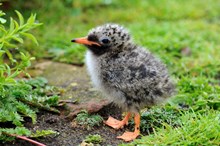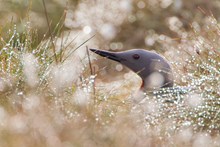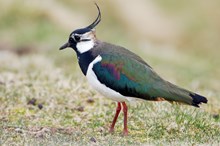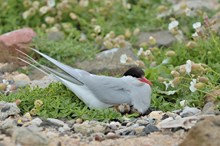10 July, 2018
Birds flock back to ‘mink free’ Hebrides
Terns, waders, divers and ducks are ‘flocking back’ to their native Outer Hebrides, following the success of a complex and challenging 17-year programme to eradicate the American mink and its devastating effect on native wildlife.
Cabinet Secretary for the Environment, Roseanna Cunningham said: “The successful removal of non-native mink from the Hebrides is a significant achievement, and is the result of the sustained commitment and effort of all the staff involved.
“I am delighted that we are already seeing positive results, bringing the return of the seabirds and wading birds which the islands are world-famous for. This will provide a real boost for nature tourism in the Hebrides.”
Mike Cantlay, Chair of Scottish Natural heritage said: “We are delighted that all the hard work has been successful for the nature of the Hebrides. Mink – an invasive non-native species - prey on ground nesting birds and fish. With major funding from the EU Life programme, at the project’s height a team of just 12 core Scottish Natural Heritage staff worked as teams of trappers to remove mink, and help bring back native birds to one of the remotest, wildest landscapes anywhere in Scotland.”
At 3,050km2 - an area twice the size of Fife - the remote Hebridean location meant significant challenges for the project to overcome. Hundreds of islands contribute to a coastline of approximately 2,500km -15% of Scotland’s total. Over 7,500 freshwater lochs - around 24% of Scotland’s total – helped invasive mink grow to dense populations rarely reached in their native North America.
Scottish Natural Heritage Area Manager for Argyll and the Outer Hebrides, David Maclennan said: “Invasive species are one of the greatest threats to the beauty and variety of our nature. But the Hebridean Mink Project shows that we can take on invasive species – and win. It is fantastic to start welcoming back our native species. A range of factors are likely to be at play, but local people are telling us that a mink free Outer Hebrides is having a hugely positive effect on wildlife and the economy.”
Murray Macleod, an operator with tourist boat provider SeaTrek, said: “Boat operators are already starting to see the results of the mink project. We have changed our tourist routes this year, because in places where there used to be no bird populations to view; now we are seeing colonies of terns with chicks. It’s been an incredible boost to local tourism – and of course you can’t top the delight on visitors’ faces when they see our native birds thriving.”
The introduction of mink in Scotland has been directly connected to the fur farming industry established in the 1950s. In the Outer Hebrides fur farms on the Isle of Lewis went out of business in the 1960’s and feral populations quickly became established. Small scale control operations carried out by sporting estates and an attempt by SNH to prevent the mink population spreading south had limited effect. By 1999 breeding populations of mink were established on North Uist and Benbecula. To date, 2,198 mink have been caught, with only two non-breeding females and associated males caught in Lewis and Harris in the last 18 months.
This is a key project in the Scottish Biodiversity Strategy Route Map, which is making a real difference for the conservation of our priority species.
Contact information
- Name
- SNH Media
- snhmedia@snh.gov.uk
Notes to editors
The project involved the following numbers of core SNH staff:
- 12 trappers: 2007-2012
- 6 trappers: 2012-2014,
- 3 trappers: 2014-18
Currently the project has one trapper only in Lewis and Harris; and one in the Uists for biosecurity and monitoring purposes.
All photos (c) SNH
Photo 1: Tern chick
Photos 2-3: Red throated diver
Photo 4: Lapwing
Photos 5-6: Arctic tern
Photo 7: American mink
NatureScot is Scotland's nature agency. We work to enhance our natural environment in Scotland and inspire everyone to care more about it. Our priority is a nature-rich future for Scotland and an effective response to the climate emergency. For more information, visit our website at www.nature.scot or follow us on X at https://x.com/NatureScot
’S e NatureScot buidheann nàdair na h-Alba. Bidh sinn a’ neartachadh àrainneachd na h-Alba agus a’ brosnachadh dhaoine gu barrachd suim a chur ann an nàdar. Tha e mar phrìomhachas againn gum bi nàdar na h-Alba beairteach agus gun dèilig sinn gu h-èifeachdach le èiginn na gnàth-shìde. Tha an tuilleadh fiosrachaidh aig www.nature.scot no air X aig https://x.com/NatureScot







